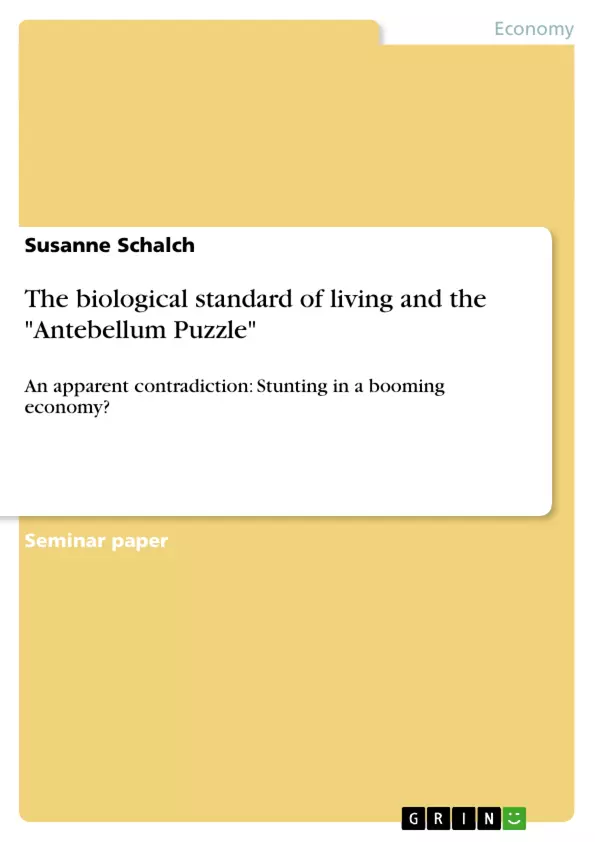Imagine someone came up to you and asked you: “name three aspects that in
your opinion are of great significance to a high standard of living”, what would you say? What determines your perspective towards the standard of living? Do you give priority to income and wealth? To personal freedom? Or to health? With regard to our today’s society, where most products are being invented in order to make our lives more comfortable, it is interesting how the standard of living can be measured best.
The most widely adopted measurement of the material standard of living is
GDP per capita adjusted for changes in the price level, called inflation or deflation.
Usually, one might guess that through a higher GDP per capita, the income and the personal wealth rises and therefore the standard of living also increases. This nevertheless does not reflect the distribution of income, or the environment that affects health and safety. Moreover, crime, pollution, and congestion – which are for many people negatively correlated with their quality of life – are neither considered.
GDP per capita therefore just measures the material standard of living, but a lot of other factors are being ignored. That is the reason why the biological rather than the material standard of living should be contemplated in terms of “measuring” the quality of life.
A second possibility to measure the standard of living is the HDI (Human
Development Index). It consists of 1/3 GDP per capita, 1/3 life expectancy index, plus 1/3 education index. Here, the standard of living does not solely depend on material assets, but also on life expectancy which contains health and the environment and education. However, important factors for the wellbeing like the political system in the country or human rights are missing.
For the first time in the 1970s, height was used as a measurement for the
standard of living. At first this might seem strange, because one thinks that height depends above all on genes. This is certainly right, but we are not taking a look at the height of individuals but of whole populations.
Inhaltsverzeichnis (Table of Contents)
- Introduction
- Rising GDP per capita – decreasing heights
- Alteration in the epidemiological environment
- Immigration wave
- Population growth and food production
- Price explosion
- Substitution of food
- Income as a factor determining height
- Urbanization and transportation
- Conclusion
Zielsetzung und Themenschwerpunkte (Objectives and Key Themes)
This paper analyzes the "Antebellum Puzzle", a phenomenon where the average height of adult males in the United States declined during the period between 1830 and 1860 despite a booming economy. It aims to identify the potential causes of this unexpected trend, focusing on factors related to the changing dietary landscape of the 19th century.
- The impact of dietary changes on the biological standard of living
- The role of disease and nutritional conditions in influencing adult height
- The potential impact of immigration on average height
- The relationship between population growth, food production, and food prices
- The influence of income, urbanization, and transportation on nutritional status
Zusammenfassung der Kapitel (Chapter Summaries)
The introduction explores the concept of the standard of living and its measurement, highlighting the limitations of GDP per capita as a sole indicator. It then introduces the use of average adult height as a more comprehensive measure of the biological standard of living, arguing that it reflects a broader range of factors contributing to well-being.
The chapter "Rising GDP per capita – decreasing heights" presents the "Antebellum Puzzle" and outlines the economic context of the period. It highlights the unexpected decline in average height despite economic growth and sets the stage for exploring potential explanations.
The chapter "Alteration in the epidemiological environment" examines the possibility of disease as a contributing factor to the height decline. While disease environment might have influenced individual health, it is argued that the rapid and widespread nature of the stunting observed suggests other contributing factors.
Schlüsselwörter (Keywords)
This paper focuses on the "Antebellum Puzzle," analyzing the decline in average height in the United States during the 1830s and 1860s. Key themes include the biological standard of living, nutritional status, dietary changes, disease environment, immigration, population growth, food production, and income disparities.
- Citation du texte
- M.A. Susanne Schalch (Auteur), 2007, The biological standard of living and the "Antebellum Puzzle", Munich, GRIN Verlag, https://www.grin.com/document/114787



